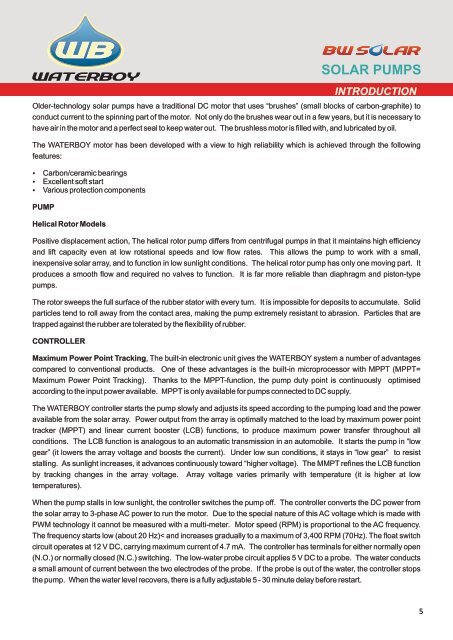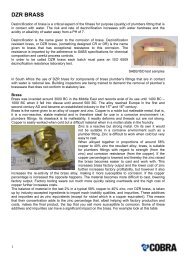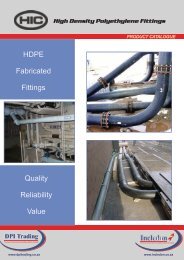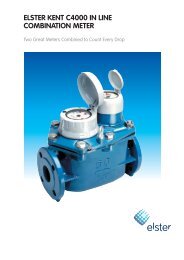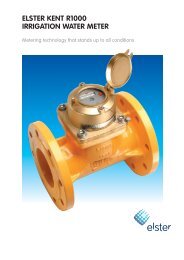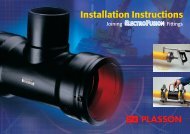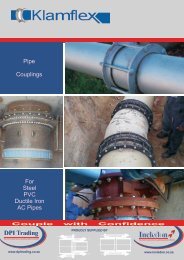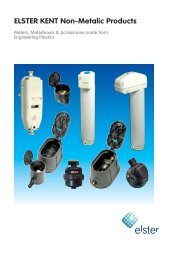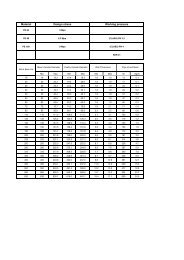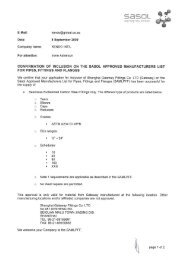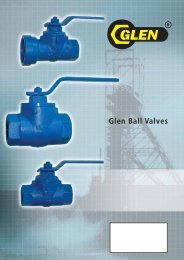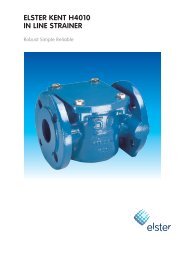Create successful ePaper yourself
Turn your PDF publications into a flip-book with our unique Google optimized e-Paper software.
Older-technology solar pumps have a traditional DC motor that uses “brushes” (small blocks of carbon-graphite) toconduct current to the spinning part of the motor. Not only do the brushes wear out in a few years, but it is necessary tohave air in the motor and a perfect seal to keep water out. The brushless motor is filled with, and lubricated by oil.The WATERBOY motor has been developed with a view to high reliability which is achieved through the followingfeatures:Ÿ Carbon/ceramic bearingsŸ Excellent soft startŸ Various protection componentsPUMPHelical Rotor ModelsPositive displacement action, The helical rotor pump differs from centrifugal pumps in that it maintains high efficiencyand lift capacity even at low rotational speeds and low flow rates. This allows the pump to work with a small,inexpensive solar array, and to function in low sunlight conditions. The helical rotor pump has only one moving part. Itproduces a smooth flow and required no valves to function. It is far more reliable than diaphragm and piston-typepumps.The rotor sweeps the full surface of the rubber stator with every turn. It is impossible for deposits to accumulate. Solidparticles tend to roll away from the contact area, making the pump extremely resistant to abrasion. Particles that aretrapped against the rubber are tolerated by the flexibility of rubber.CONTROLLERMaximum Power Point Tracking, The built-in electronic unit gives the WATERBOY system a number of advantagescompared to conventional products. One of these advantages is the built-in microprocessor with MPPT (MPPT=Maximum Power Point Tracking). Thanks to the MPPT-function, the pump duty point is continuously optimisedaccording to the input power available. MPPT is only available for pumps connected to DC supply.The WATERBOY controller starts the pump slowly and adjusts its speed according to the pumping load and the poweravailable from the solar array. Power output from the array is optimally matched to the load by maximum power pointtracker (MPPT) and linear current booster (LCB) functions, to produce maximum power transfer throughout allconditions. The LCB function is analogous to an automatic transmission in an automobile. It starts the pump in “lowgear” (it lowers the array voltage and boosts the current). Under low sun conditions, it stays in “low gear” to resiststalling. As sunlight increases, it advances continuously toward “higher voltage). The MMPT refines the LCB functionby tracking changes in the array voltage.temperatures).Array voltage varies primarily with temperature (it is higher at lowWhen the pump stalls in low sunlight, the controller switches the pump off. The controller converts the DC power fromthe solar array to 3-phase AC power to run the motor. Due to the special nature of this AC voltage which is made withPWM technology it cannot be measured with a multi-meter. Motor speed (RPM) is proportional to the AC frequency.The frequency starts low (about 20 Hz)< and increases gradually to a maximum of 3,400 RPM (70Hz). The float switchcircuit operates at 12 V DC, carrying maximum current of 4.7 mA. The controller has terminals for either normally open(N.O.) or normally closed (N.C.) switching. The low-water probe circuit applies 5 V DC to a probe. The water conductsa small amount of current between the two electrodes of the probe. If the probe is out of the water, the controller stopsthe pump. When the water level recovers, there is a fully adjustable 5 - 30 minute delay before restart.<strong>SOLAR</strong> <strong>PUMPS</strong>INTRODUCTION


